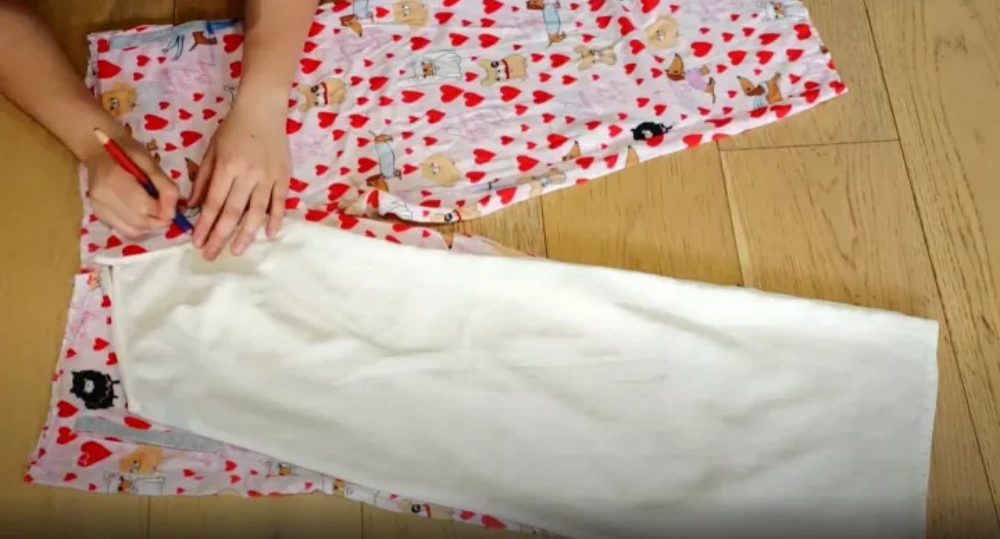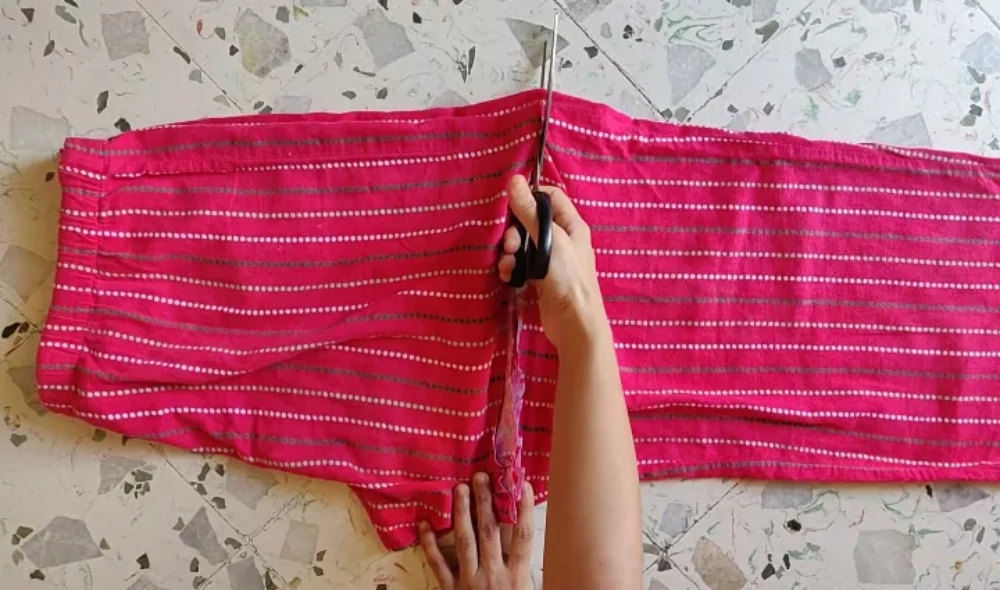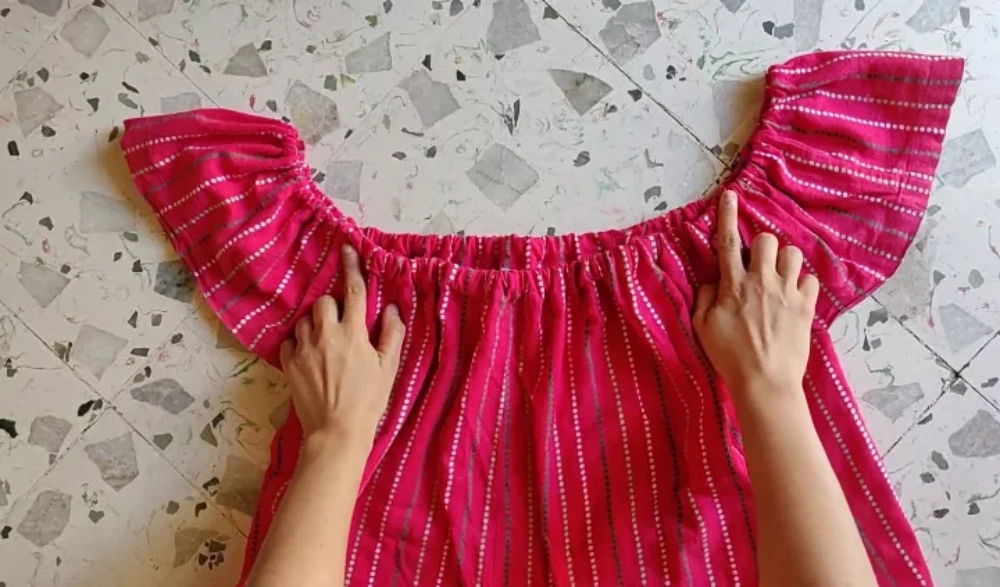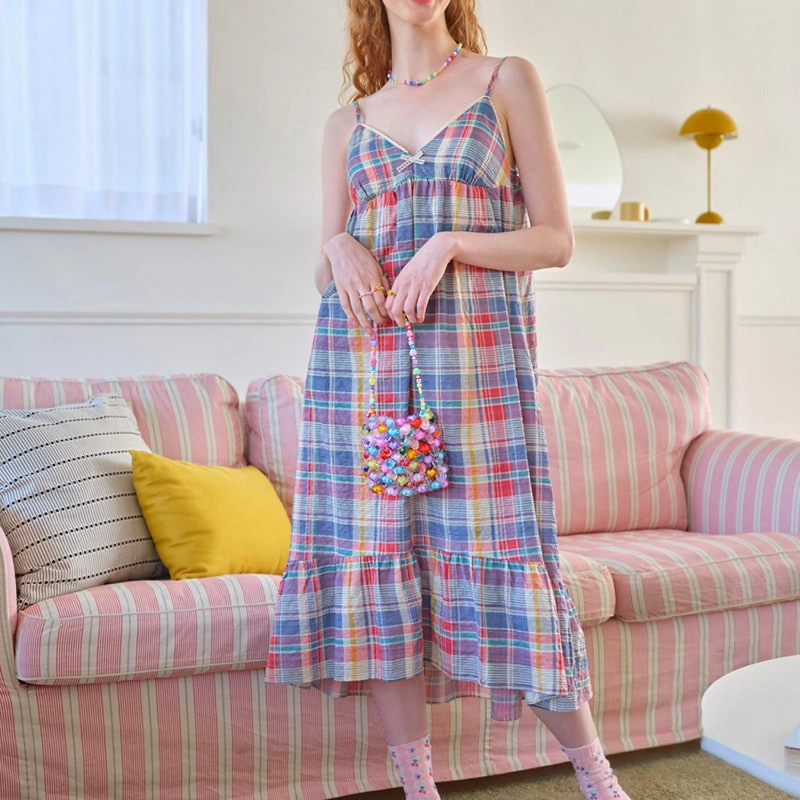Yes, you can totally master how to turn pajama pants into a dress at home! Grab your favorite pair—quality ones from Friendtex work great. This diy transformation feels easy and fun, whether you sew or try a no-sew hack. You get to upcycle, create something new, and show off your style. Why not give it a try and see what you can make?
Materials & Prep
Pajama Pants Choice
Before you start, pick the right pajama pants. You want something comfy, stylish, and easy to work with. Friendtex offers high-quality pajama pants that make this project a breeze. Their fabrics feel soft and hold up well during transformations.
Tip: Always wash your pajama pants before you begin. Clean fabric is easier to cut and sew, and it helps you get a neat finish.
When you choose your pants, pay attention to the fabric. The type of material you pick can change how your dress looks and feels. Here’s what you should look for:
- Stretchy fabrics (like jersey or spandex blends) give you more flexibility. They make it easier to fit the dress to your body.
- Cotton blends are soft, breathable, and easy to sew. They work well for both sewing and no-sew methods.
- Thicker fabrics hold their shape better, while lighter ones drape nicely for flowy styles.
Researchers have found that fabric choice is key for successful clothing transformations. They tested different materials, like 100% cotton muslin, to see which ones worked best for durability, comfort, and style. The right fabric makes your upcycled dress look unique and last longer.
Tools & Supplies
You don’t need a fancy setup to turn pajama pants into a dress. Gather these basic tools before you start:
- Sharp fabric scissors ✂️
- Measuring tape or ruler
- Fabric chalk or washable marker
- Sewing machine or needle and thread (for sewing methods)
- Fabric glue or double-sided tape (for no-sew hacks)
- Pins or clips to hold fabric in place
- Iron for crisp seams
Note: Taking time to prep your materials pays off. Designers often wash, strip, or dye old garments before upcycling. These steps help you get a fresh, high-quality look in your finished dress.
With the right pants and tools, you’re ready to create something amazing. Let’s get started!
How to Turn Pajama Pants into a Dress
Measure & Mark

Ready to start your transformation? Grab your pajama pants and lay them flat on a clean surface. This is where you set the foundation for your new dress. Take your time with this step. Good measurements mean a better fit and a more polished look.
Here’s a quick step-by-step tutorial for measuring and marking:
- Measure twice to make sure you get it right.
- Keep the measuring tape loose—don’t pull it too tight.
- Stand up straight and relax your body.
- Use a mirror to check if your tape is straight.
- Update your measurements if it’s been a while since you last checked.
- Use a flexible tape and wear fitted clothes or underwear.
- Mark key points: waist, bust, hips, and the length you want for your dress.
- Follow each step carefully, like measuring your waist at its natural spot and your bust at the fullest part.
Tip: Use fabric chalk or a washable marker to make your marks. Double-check everything before you cut. This helps you avoid mistakes and makes the rest of the process much easier.
You can also use a long ruler to check that your lines are straight and a small gauge to measure seam allowances. These tools help you get a professional finish, even if you’re new to sewing or upcycling.

Cut & Open Seams
Now it’s time to cut and open the seams. This is where your pajama pants start to look less like pants and more like the base for a dress. Start by turning your pants inside out. Find the inner leg seams and use sharp fabric scissors to cut along them. Open up the legs so you have two large fabric panels.
When you cut, pay attention to the grain of the fabric. Cutting along the straight grain helps your dress keep its shape. If you want a little stretch, you can cut on the bias (at a 45-degree angle), but be careful—bias cuts can stretch out if you pull too hard.
If your pants have any damaged or ripped areas, don’t worry. You can work around them by trimming away the bad spots or using patchwork. Add fabric scraps or decorative patches to cover holes and give your dress a unique look.
Note: Use a seam ripper for tricky stitches. Take your time and avoid rushing. Press open the seams with an iron for a crisp, flat finish. This makes sewing or gluing much easier later on.
Workshops on fabric alterations show that understanding how seams work helps you choose the best way to cut and finish your dress. Pressing and finishing seams make a big difference in how your dress looks and feels.
Make a Dress Out of Pajama Pants

Here comes the fun part—actually making your dress! You have lots of options, whether you want to sew or try a no-sew method. Both approaches work well and let you get creative.
Sewing Method:
- Use the elastic waistband as the top of your dress for a comfy, easy fit. This works great for strapless styles or as the waist for a skirt.
- Pin or clip the fabric panels together where you want the seams. Sew along your marked lines, using a straight stitch or zigzag for stretchy fabrics.
- Finish the raw edges with a zigzag stitch or serger to prevent fraying.
- Add straps, sleeves, or a belt if you want. You can use leftover fabric from the pants or add contrasting fabric for a pop of color.
No-Sew Method:
- Fold and tie the fabric panels to create a halter or wrap dress. Use fabric glue or double-sided tape to hold seams in place.
- Try a patchwork style by layering fabric scraps over damaged spots and gluing them down.
- Use the elastic waistband as a neckline or waist, depending on your style. You can even create a V-seam by overlapping the panels and securing them with glue or safety pins.
Research shows that both sewing and no-sew techniques help you upcycle clothes in creative ways. Sewing repairs and alterations restore function and fit, while no-sew methods let you change the look and feel of your garment. Both approaches help you use your clothes longer and reduce waste.
Pro Tip: If you want sleeves, use the leftover fabric from the legs. Cut and shape them, then sew or glue them onto the dress. You can also add ruffles, pockets, or decorative trims for extra flair.
Don’t be afraid to experiment. If you make a mistake, you can always adjust or add a patch. The goal is to have fun and create something that feels like you. This process is easy to follow, and you’ll love showing off your new dress made from pajama pants.
Maxi Skirt & Dress Styles
Maxi Skirt Option
You can turn pajama pants into a maxi skirt with just a few easy steps. Start by opening the inner seams of both legs. Lay the fabric flat and overlap the panels to create a long, straight shape. Use the original waistband for a secure and stretchy fit. Sew or glue the panels together along the sides. Now you have a maxi skirt that flows and moves with you.
Want to make your maxi skirt stand out? Add a slit on one side for a trendy look. You can also attach fabric scraps or lace at the hem for extra flair. Many people love the maxi skirt because it feels comfortable and looks stylish at the same time. You can wear it for lounging at home or dress it up for a night out.
Dress with Sleeves
If you want a dress with sleeves, save the fabric from the pant legs. Cut the leftover pieces into two rectangles. Shape them to fit your arms and attach them to the main body of your dress. You can sew or use fabric glue for this step. Try puff sleeves, cap sleeves, or even long sleeves, depending on your style.
Decorative elements like buttons, patches, or ribbons can make your dress unique. Studies show that adding different textures, patterns, or features like pockets and zippers gives your upcycled clothing more personality. Mixing fabrics or colors creates a one-of-a-kind look that reflects your creativity.
No-Sew Hacks
No sewing machine? No problem! You can make a maxi skirt or dress using fabric glue, double-sided tape, or even safety pins. Wrap the fabric around your body and secure it at the waist or bust. Use the elastic waistband for a snug fit. Try tying the ends of the fabric into knots for a boho vibe.
Patchwork is another fun no-sew option. Layer fabric scraps over any worn spots and glue them down. Add decorative trims or appliqués for a playful touch. These small details can turn a simple comfortable skirt or dress into a statement piece.
Tip: Play with color and texture. The right mix of fabrics and decorations can make your DIY maxi skirt or dress truly special.
Finish & Style
Hem & Iron
You’ve shaped your dress or skirt, but the magic happens in the finishing touches. Hemming and ironing give your upcycled piece a crisp, professional look. Start by folding the raw edges under and pinning them in place. Use a straight stitch if you sew, or fabric glue for a no-sew finish. Press the hem with a hot iron to set it flat.
Tip: Always iron your seams and hems before wearing your new dress. This step smooths out wrinkles and helps the fabric hold its shape.
Experts recommend several finishing techniques to boost both the look and feel of your garment. Here’s a quick table of common fabric finishing practices:
| Finishing Type | What It Does | Why It Matters |
|---|---|---|
| Mechanical (Ironing) | Smooths, flattens, and sets seams | Gives a polished, neat finish |
| Hemming | Secures raw edges | Prevents fraying, adds durability |
| Washing & Drying | Removes residues, softens fabric | Prepares fabric for wearing |
A clean hem and pressed seams can make your DIY dress look store-bought!
Final Fit
Now, try on your new creation. Check the fit at the bust, waist, and hips. Adjust any seams or hems if needed. If you used the elastic waistband, you’ll notice how comfortable and flexible it feels. Move around, sit, and stretch to make sure everything stays in place.
Don’t worry if you spot a small mistake. You can always trim, re-hem, or add a patch. Upcycling is about learning and improving with each project.
Personalize
This is your chance to make your dress truly yours. Add buttons, lace, patches, or embroidery. Use fabric paint or iron-on decals for a pop of color. Many people love upcycled clothing because it lets them express their personality and creativity.
- You get a one-of-a-kind piece that no one else has.
- Personal touches make your dress feel special and meaningful.
- Upcycling brings joy, stress relief, and a sense of accomplishment.
- Soft, high-quality fabrics and unique textures boost comfort and satisfaction.
- Sharing the story behind your dress adds even more value.
Consumer research shows that personalization in upcycled projects increases satisfaction, emotional well-being, and creativity. You save money, help the planet, and enjoy the process. So go ahead—add those finishing touches and wear your new dress with pride!
Turning pajama pants into a dress lets you get creative and help the planet at the same time. Every time you try a new style or technique, you build your skills and make your upcycled pieces look even better. Designers say that experimenting with fabric, mending, and embellishing leads to higher-quality results over time. You’re not alone—more people are joining the upcycling movement every year.
| Indicator | Numerical Trend | What It Means for You |
|---|---|---|
| Market Size Growth | USD 3.6B (2023) → USD 9.0B (2033) | Upcycling is booming! |
| Willingness to Pay More | 35% of US consumers | People value sustainable fashion |
| Clothing Lifespan Extension | +9 months = 20-30% less waste | Your projects make a difference |
Keep experimenting, share your creations, and have fun with every project. When you need high-quality pajama pants or fabric, Friendtex has you covered for your next upcycling adventure!
FAQ
Can I make a dress from any pajama pants?
You can use almost any pajama pants. Stretchy or cotton blends work best. Avoid pants with thick seams or heavy decorations. Soft, high-quality fabric gives you the best results.
What if I don’t have a sewing machine?
No worries! You can use fabric glue, double-sided tape, or even safety pins. These no-sew methods hold fabric together and let you get creative without sewing skills.
How do I fix mistakes or uneven cuts?
Don’t panic if you cut something wrong. Trim the edges, add a patch, or use decorative trims to cover mistakes. Upcycling is all about experimenting and learning as you go.
Can I wash my upcycled dress like normal clothes?
Yes, you can! Wash your dress on a gentle cycle with cold water. Air dry it to keep the fabric looking fresh. If you used glue, check the label for washing instructions.


